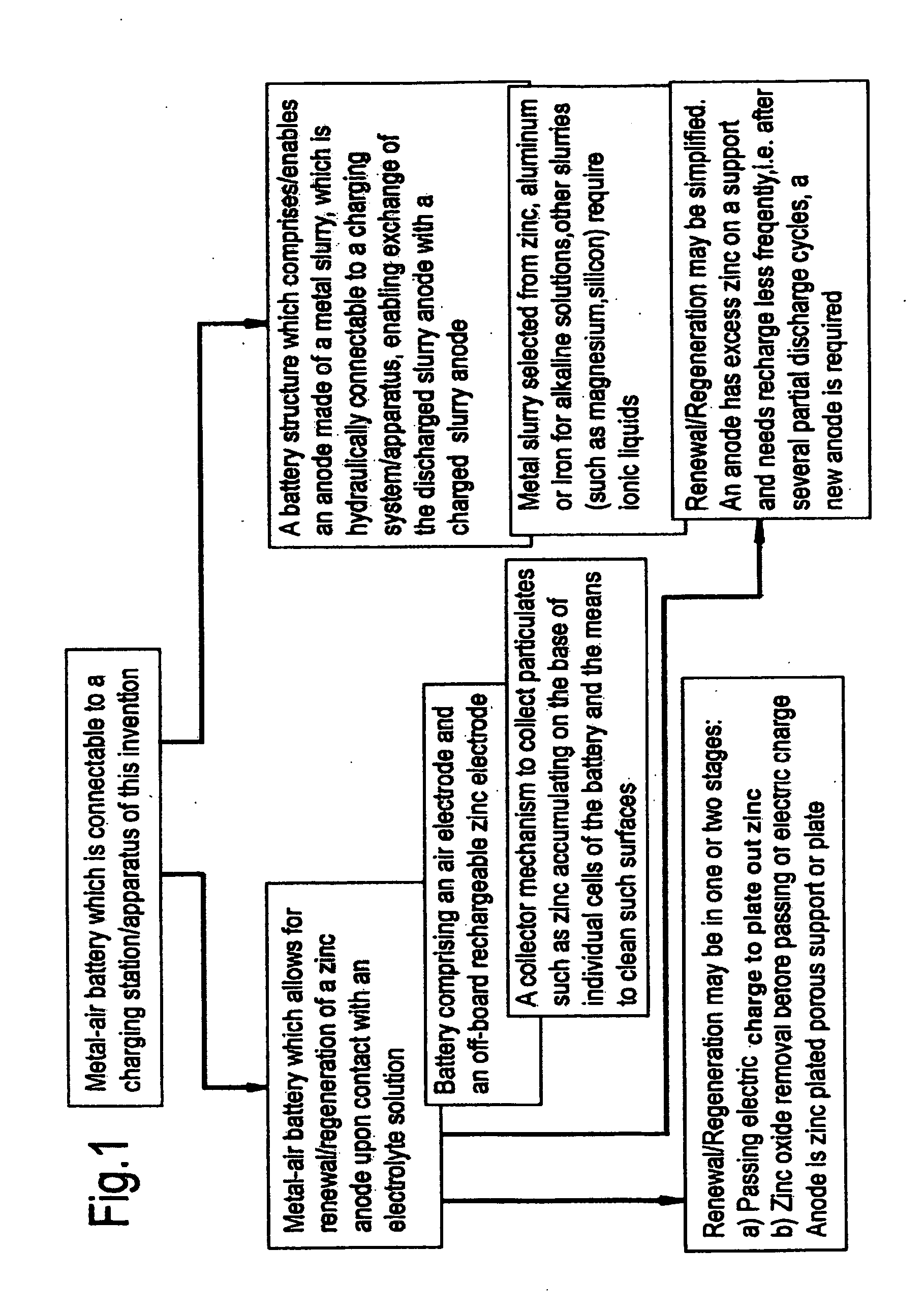Zinc-Air Battery
a zinc-air battery and zinc-air technology, applied in secondary cell charging/discharging, fuel and secondary cells, cell structure combinations, etc., can solve the problems of zinc electrode, capacity fading and stack deformation, and achieve the effect of improving energy/weight and energy/volume, low volume, and low weigh
- Summary
- Abstract
- Description
- Claims
- Application Information
AI Technical Summary
Benefits of technology
Problems solved by technology
Method used
Image
Examples
example 1
[0225]A zinc-air cell was constructed from two bi-functional air electrodes (10 cm×10 cm×0.1 cm thick) flanking a central zinc anode (as in FIG. 1). The air electrodes were edge-bonded using epoxy to a narrow U-shaped plastic profile such that the internal cell volume was about 40 cc and the cell, which was fitted with electrolyte inlet and outlet vents, was closed with a plastic cover. The zinc anode support was a centrally placed nickel mesh (10 cm×10 cm×0.05 cm thick), 20 holes per cm, that had been flash coated with indium to ensure an adherent zinc coating on zinc electroplating and inhibition of zinc self-discharge. Celgard (trademark) microporous polypropylene separators were bonded at the edges of the air electrodes inside the cell to prevent anode / cathode shorting. On the base of the cell was bonded a nickel mesh coated with porous nickel as hydrogen evolution electrocatalyst, in order to digest any occasional zinc particles falling from the anode. The initial spacing betwe...
PUM
 Login to View More
Login to View More Abstract
Description
Claims
Application Information
 Login to View More
Login to View More - R&D
- Intellectual Property
- Life Sciences
- Materials
- Tech Scout
- Unparalleled Data Quality
- Higher Quality Content
- 60% Fewer Hallucinations
Browse by: Latest US Patents, China's latest patents, Technical Efficacy Thesaurus, Application Domain, Technology Topic, Popular Technical Reports.
© 2025 PatSnap. All rights reserved.Legal|Privacy policy|Modern Slavery Act Transparency Statement|Sitemap|About US| Contact US: help@patsnap.com



